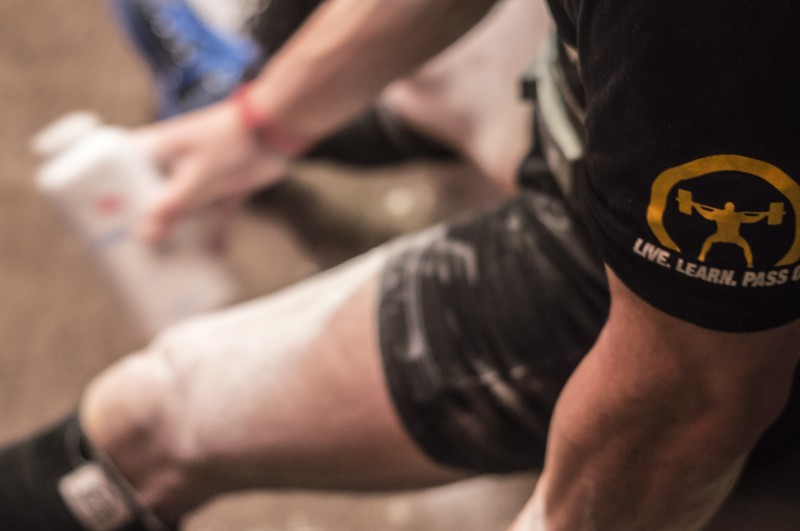
When it comes to strength sports and training for specificity, it is very easy for and athlete, trainer, or programmer to gravitate towards what is popular or en vogue without considering the demands imposed upon the athlete, or—better yet—without the knowledge of certain training methodologies.
There are a couple very important premises that need to be of high priority when it comes to a given strength sport. The first priority should be the scheduling of major competitive events throughout the year. The second priority should be the athletic expectations of each of these scheduled competitive events for the given athlete. The third priority, which personally will make or break the annual training process, is the evaluation of performance in accordance to the expectations of each given competitive event. The trainer, programmer, or athlete needs to be cognizant of these priorities of training before they start to construct the training methodologies for the strength athlete. This article is going to look at each of these three priorities and explain why they matter.
Competitive Scheduling
The competitive scheduling for the strength athlete is a training or competitive variable that is completely controllable by both the athlete, trainer/programmer, and the governing bodies of certain strength-sport entities. This is the one variable that will provide a basic structure of off-peak training and escalation of training intensities within the competitive schedule.
RECENT: An Introduction to the Yearly Training Plan of the Strength Athlete
When looking at the competitive scheduling of say, powerlifting in the United States, the athlete and trainer/programmer have endless possibilities and venues to choose from. It is not until the propositions of federations, and each of the federation's ideals of competition (i.e. monolift vs non-monolift, the determination of raw, multi-ply vs non-multi ply, the level international presence, etc.), do limitations start to exist. This is also before the inclusion of the cost to benefit ratio of travel by the athlete and programmer/trainer. Once all these factors are taken into account there will be a basis to start training with the previous mentioned goal. The athlete and trainer/programmer will then be able to improve the athlete's competitive successes by increasing training capabilities and strength measurables leading to the enhancement of the individual's performances.
To give an example in a conceivable context of the above, think of it like this: In the United States Powerlifting Association (USPA) it has been common practice that their most tenured national championships are held every July with the adjoining world championships being held in November (IPL). This is also very similar to the International Powerlifting Federation (IPF) participating athlete, meaning that outside any invitationals or “specialty” competitions, there is a conditional formatted structure of training by the known conditions of competition venue. Now, it would be best for the programmer and athlete to exhibit consistent performances, while also improving the strength measurables, which in powerlifting is the result of each discipline and the collective total.
Expectations of the Athlete
The expectations of any strength athlete are very simple and identifiable to all: to exhibit steady and consistent gains in strength proficiency, which in turn should manifest itself in the competitive event by the elevated result in performance. Keep in mind that this statement has little substance if strength proficiencies cannot be maintained and improved upon annually, hence the exact motivations of these writings. The evaluations of athletic success is probably one of the most understated variables in training and competition. There are many ways to gauge success in terms of training and competition; they are interdependent yet differ in such a degree that in terms of this article, the evaluation of success of competition will be outlined.
Looking at success in competition is straightforward for a strength sport like powerlifting. In a juvenile sense, there are nine attempts. It is a sport comprised of making the highest marks collectively in the nine attempts, which is a combination of the three disciplines of the sport (the squat, the bench press, and the deadlift).
Evaluation of Performance
However, upon closer examination, here is another perspective: in the attempts that were not successful, was there an aspect of neglected strength development, or a lapse in technical focus of the athlete, or under-adequate assessment of the attempts by the judges?
The answers to these questions subsequently will determine the evolution of the next cycling of training, again with the same goal: to increase the strength measurable in sport. The evaluation process in between annual competitions is something that needs to be handled with honesty and realism by all involved. Having a trainer, programer, or friend, that can look the athlete in the face and tell them that they need to change their approach to the platform, or better yet they need to focus consistently on all nine attempts equally, is extremely important. But also keep in mind that the views of these individuals are of minimal to no value if the athlete cannot put complete trust into constructive criticism received throughout the evaluation process.
By providing an extensive foundation of training principles with the training priorities discussed here, the training process can begin. The next article will begin to outline a basic methodology of training principle and practice that will be extensively expanded upon.












1 Comment